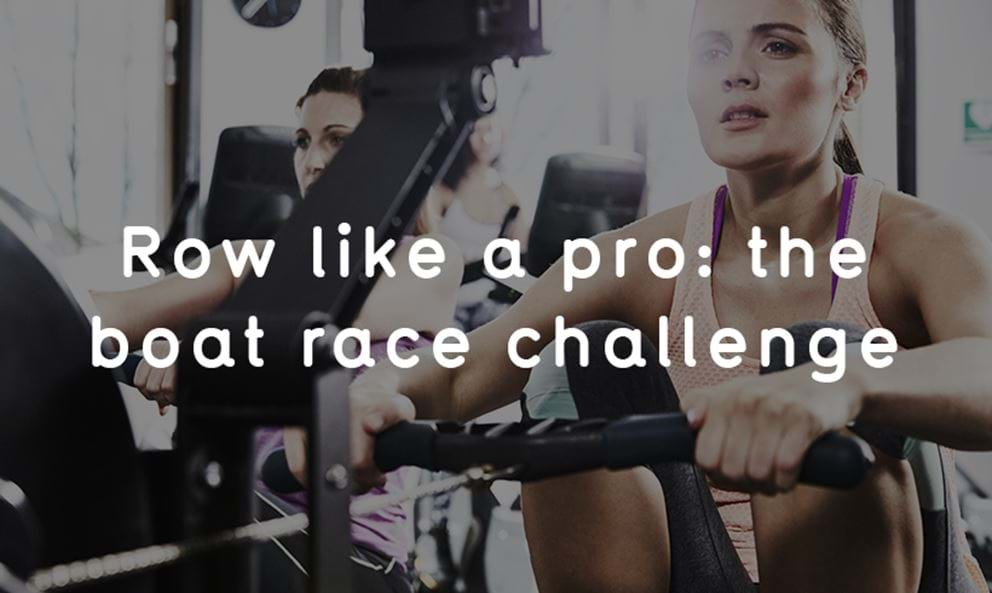Row like a pro: the boat race challenge

The world-famous Oxford and Cambridge Boat Race is just around the corner, due to take place on the 2nd of April. On the day of the race, the two elite teams will go head-to-head and attempt to out-row one another on a 6.8km stretch of the river Thames.
Think you could do that… on a rowing machine?
That’s not a rhetorical question. It’s a challenge. If you feel like pushing your limits alongside the elite rowers of Oxford and Cambridge, from the comfort of your gym, here’s a quick list of things to do to get you up to scratch.
Of course, this is supposed to be a fun challenge – there’s no ancient University honour riding on your best time. Push yourself as much as you’re comfortable with, but keep a manageable pace, and don’t get injured for no reason.
Perfect your form
Proper form is extremely important in all physically demanding activities. It’s a way of preventing injury and targeting the right muscle groups during weight training, a way of avoiding slipping a disc while lifting heavy boxes, and also a way of improving efficiency in sports like rowing.
One of the best ways to improve your time and distance on the rowing machine is to perfect your form.
Instead of trying to row as hard and fast as possible, slow it down just enough for the movement to feel smooth and natural rather than forced. Take longer, slower strokes, and be sure to use your legs for the first part of the movement before pulling back with your arms. Each stroke should finish under your pecs, around your solar plexus. Finishing your strokes too high increases the risk of injury and can cause you to become fatigued more easily.
Strengthen your abs
Weak or tight core muscles can wreak havoc on your ability to perform at the peak of your ability on the rowing machine. A strong core is essential in maintaining a smooth, efficient technique. If your core begins to falter, the fluidity of the entire movement will break down and cause strain and fatigue.
Get into the habit of stretching regularly after your workouts to loosen up areas of tension and prevent postural imbalances – a yoga or Pilates routine would work well for this.
Be sure to work a good amount of ab strengthening exercises into your training routine as you’re working up to your 6.8k effort – just be sure to go easy on the training in the week leading up to your attempt. You don’t want to go in for it completely pre-exhausted.
Mix up your training
Of course, rowing machine work should be the core of your training when trying to improve your distance and performance on the rowing machine.
But it definitely doesn’t hurt to shock your system and keep your mind fresh by throwing in some other exercises, too.
Strength training with free weights can be a fun way of switching your attention to something completely different. Any extra strength you build will also help to keep you going for longer before becoming fatigued, as long as you maintain proper form and don’t try to use brute force to power through your strokes.
Other forms of cardio such as running, swimming or cycling can also be a great way of keeping you from feeling burned out, while also improving your lung capacity and muscular endurance – skills which will carry over directly to rowing performance.
Build up to it slowly, marathon style
When training for a marathon or similar event, it’s common to do around three runs a week. The first, an “easy” run – slow and for a short distance. The second, a more intense run where you aim to cover roughly the same distance as the first, but maintain a quicker pace throughout. The third, a “long” run, where you keep a calm, manageable pace, but commit to being on the road for up to several hours at a time, coming as close as you can to covering the total distance you plan to run in the competition.
Of course, this template carries over to the 6.8k rowing machine challenge no problem. Commit to rowing three days a week, at least to start with. A short row at an easy pace, a more intense row covering the same “distance,” and a “long” row done at a manageable pace. Increase the intensity as required over the course of your training.
Rest days should regularly be taken to allow for recovery, with your supporting workouts squeezed in where convenient.


